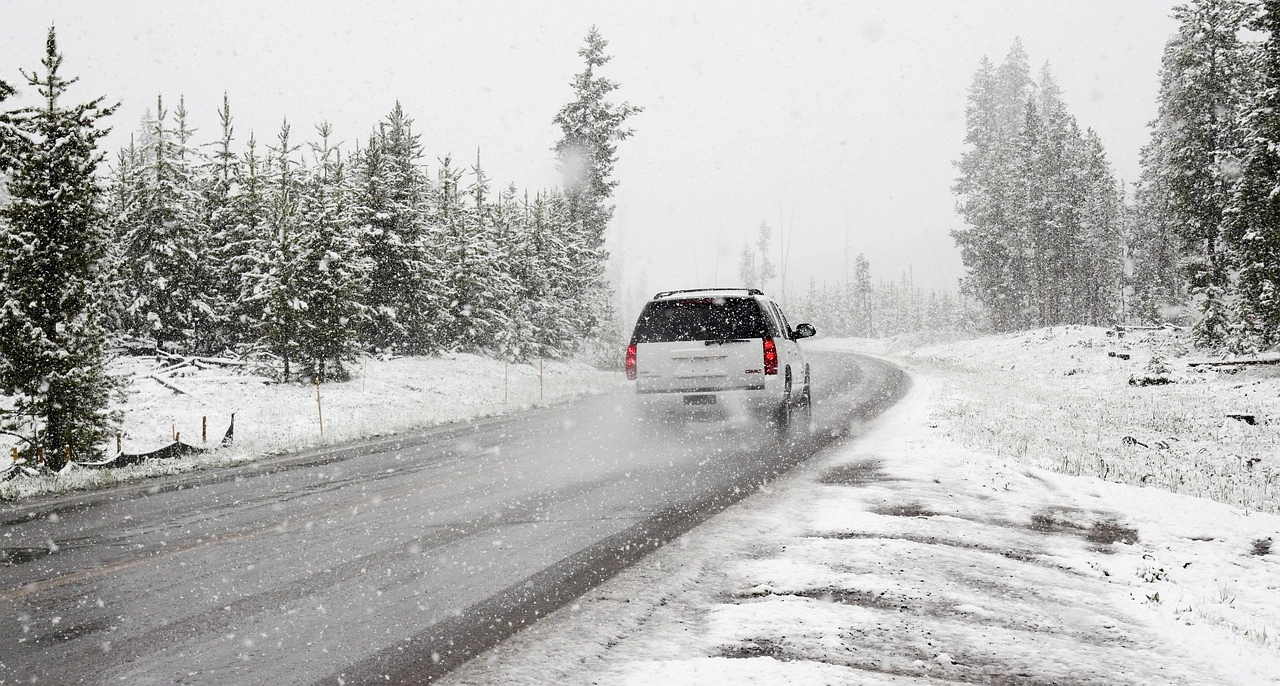Winter driving presents unique challenges that test even experienced drivers. From slippery roads to reduced visibility, cold weather conditions demand special preparation and driving techniques. Whether you’re facing your first winter behind the wheel or looking to refresh your cold-weather driving skills, these essential tips will help keep you safe when temperatures drop.
Vehicle Preparation
Winter Tires: Your Most Important Safety Feature
Nothing impacts winter driving safety more than proper tires. Winter tires use specialized rubber compounds that remain flexible in cold temperatures and feature tread patterns designed to grip snow and ice. Studies show they can reduce stopping distances by up to 30% compared to all-season tires when temperatures fall below 45°F (7°C).
If you live in an area with severe winter conditions, consider studded tires or tire chains for extreme situations. Remember that even the best winter tires won’t help much if they’re worn out—ensure they have at least 6/32″ of tread depth.
Battery Health Check
Cold weather significantly reduces battery performance. A battery that works perfectly in summer may fail to start your car on a frigid morning. Have your battery tested before winter arrives, particularly if it’s more than three years old. Consider a battery blanket for extremely cold climates.
Fluid Management
Ensure all fluids are winter-ready:
- Switch to winter-grade oil if recommended by your manufacturer
- Use winter windshield washer fluid with antifreeze properties
- Check coolant/antifreeze mixture (typically 50/50 with water)
- Top up gas frequently—a fuller tank prevents fuel line freezing
Emergency Kit Essentials
Prepare a winter emergency kit containing:
- Warm blankets
- Extra gloves, hats, and warm clothing
- Flashlight with extra batteries
- Shovel and ice scraper
- Bag of sand or cat litter for traction
- Jumper cables
- Non-perishable snacks and water
- First aid supplies
- Portable phone charger
Driving Techniques
Gentle Input Philosophy
Winter driving requires a delicate touch. Sudden movements—whether acceleration, braking, or steering—can break traction and cause skids. Practice these techniques:
- Accelerate slowly and steadily
- Apply brakes gently and earlier than usual
- Make gradual, deliberate steering movements
- Increase following distance to 8-10 seconds (vs. 3-4 seconds in dry conditions)
Managing Skids
Even with careful driving, skids can happen. Knowing how to recover is crucial:
For front-wheel skids (understeer): When your front tires lose grip and the car continues straight despite turning the wheel:
- Ease off the accelerator
- Steer straight momentarily
- Gently point wheels where you want to go once traction returns
- Avoid braking during the skid
For rear-wheel skids (oversteer): When your rear end slides out:
- Turn steering wheel in the direction of the skid
- Avoid braking or accelerating abruptly
- Look where you want to go, not at the obstacle you’re trying to avoid
- Straighten wheels as the car recovers
Visibility Strategies
Poor visibility compounds winter driving challenges:
- Clear ALL snow and ice from your vehicle, including roof, headlights, and windows
- Use headlights even during daylight in snowy conditions
- Keep wipers in good condition and consider winter-specific blades
- Never use cruise control on potentially slippery roads
Special Situations
Hills and Inclines
Hills require special techniques in winter:
- Build gentle momentum on approach (without speeding)
- Reduce speed at the top
- Descend in a lower gear, avoiding braking when possible
Becoming Stuck
If you become stuck in snow:
- Clear snow from around tires and exhaust pipe
- Straighten wheels
- Use gentle, steady acceleration (avoid spinning wheels)
- Rock the vehicle by shifting between drive and reverse if needed
- Use floor mats, sand, or cat litter for added traction
Planning Ahead
Winter driving safety begins before you start the car:
- Check weather and road conditions before departing
- Share your route and expected arrival time with someone
- Consider postponing non-essential travel during severe weather
- Allow extra time for winter journeys
- Keep your fuel tank at least half full
The Ultimate Winter Driving Skill: Patience
Perhaps the most important winter driving skill is patience. Accept that journeys will take longer, leave earlier, and resist the urge to rush. Remember that arriving late is better than not arriving at all.
By preparing your vehicle properly and adjusting your driving techniques for winter conditions, you’ll dramatically reduce your risk of accidents and ensure you reach your destination safely, regardless of what winter throws your way.
The article was generated by AI

